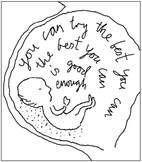Compare it, for example, with the exhibition Banksy versus Bristol Museum (2009). The museum apparently allowed the anonymous Banksy to do whatever he liked in the galleries, even to the extent of displaying fakes and introducing graffiti into the hallowed environment of the institution. The museum management explained to the visitors that:
"This exhibition presents work by a local graffiti artist called Banksy. Everything on display has been produced legitimately for the purpose of exhibition. The museum does not support or condone any form of illegal activity, regardless of its artistic merit."
From this we can conclude that definitions of what is and what isn't art are not fixed; and that the issue of "artistic merit" is not the sole criteria. Anything can qualify as "Art", so long as it is sanctioned and legitimised by the art world, i.e. museums, directors, dealers, art critics - and individuals purporting to be Artists.
In addition, consider the way in which the Poussin story has been framed by the Daily Telegraph:
Waters, Florence (2011) "Poussin vandalism sparks museum fee debate", Daily Telegraph, 19/07, accessed 19/07/2011 at, http://www.telegraph.co.uk/culture/art/art-news/8647250/Poussin-vandalism-sparks-museum-fee-debate.html
Why bring the issue of entrance fees to the fore here? Is the newspaper reporting a connection or seeking to make that association for its own purposes?
The framing of the incident - e.g. the parallels I draw with Banksy or the Daily Telegraph's mentioning of entrance charges - frame the story just as decisively as the ornate golden border that circumscribes Poussin's The Adoration of the Golden Calf, as can be seen here in its vandalised state:
Jones, Jonathan (2011) "Why Poussin's Golden Calf was a sitting duck at the National Gallery", The Guardian, 18/07, accessed 19/07/2011 at, http://www.guardian.co.uk/artanddesign/jonathanjonesblog/2011/jul/18/poussin-golden-calf-national-gallery-security






